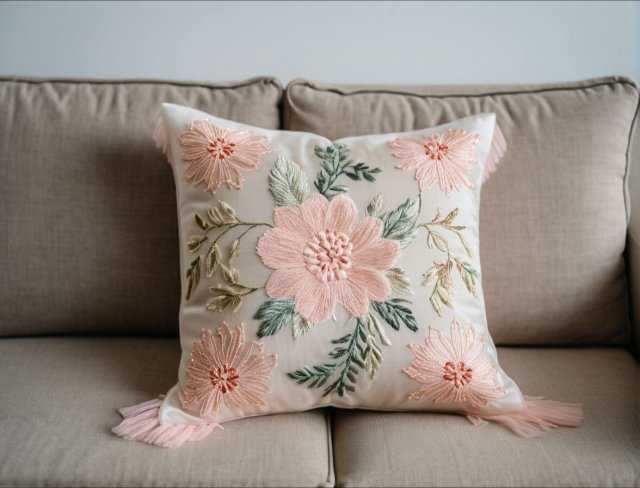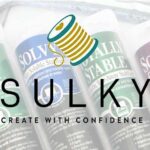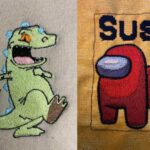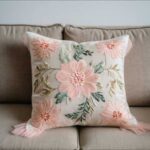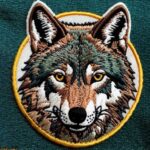Exploring Transparent Embroidery
Working with Sheer Fabrics
Introduction
Sheer fabrics, with their delicate and translucent qualities, present both a challenge and an opportunity for embroidery enthusiasts. Their light, airy nature allows for stunning designs that appear to float on the surface, creating an elegant, ethereal effect that is difficult to achieve with other materials. Whether for fashion, home décor, or special occasion pieces, sheer fabric embroidery brings a touch of sophistication that enhances any project. However, to achieve this desired effect, it’s crucial to understand the intricacies involved in working with such delicate materials.
This article delves into the enchantment of sheer embroidery, offering insights into preparation, techniques, and troubleshooting tips specific to these fabrics. From selecting the right stabilizers and needles to understanding how to layer designs and manage the delicate texture of sheer materials, each step plays a pivotal role in creating flawless results. By exploring the creative possibilities and addressing the unique challenges associated with sheer fabrics, this guide equips you with the knowledge to master this elegant embroidery technique, turning delicate fabrics into breathtaking works of art.
The Enchantment of Sheer Embroidery
Sheer embroidery captivates with its delicate and ethereal quality, offering a distinct charm that sets it apart from other embroidery techniques. The transparent nature of sheer fabrics allows embroidered designs to float gracefully above the material, creating a visually striking effect that enhances the overall project. This unique characteristic is especially evident in applications such as elegant bridal gowns, delicate lingerie, and refined decorative accents, where the subtle transparency adds a touch of sophistication and grace.
The aesthetic appeal of sheer fabrics is enhanced by their ability to interact with light in intriguing ways. The transparency of the fabric allows light to pass through and highlight different aspects of the embroidery, producing a dynamic effect that changes with movement and lighting. This interplay of light and shadow can create a sense of depth and dimension, making the embroidered design appear more intricate and captivating. The result is a beautiful visual effect that can transform even the simplest designs into stunning works of art.
However, working with sheer fabrics presents unique challenges that require careful consideration and technique. Stabilization is crucial to prevent shifting and distortion of the fabric during the embroidery process. Using appropriate stabilizers, such as water soluble or tear away types, helps maintain the fabric’s integrity and ensures a crisp, clean design. Additionally, selecting fine needles and lightweight threads is essential to avoid damaging the delicate fabric and to achieve precise, detailed embroidery.
Sheer embroidery also opens up a world of creative possibilities. The ability to layer different sheer fabrics or combine them with various stitching techniques can result in rich, multi dimensional designs. For example, layering sheer overlays can add depth and texture, while incorporating contrasting or metallic threads can highlight specific elements of the design. These creative approaches allow for innovative and visually stunning results that make the most of the fabric’s unique qualities.
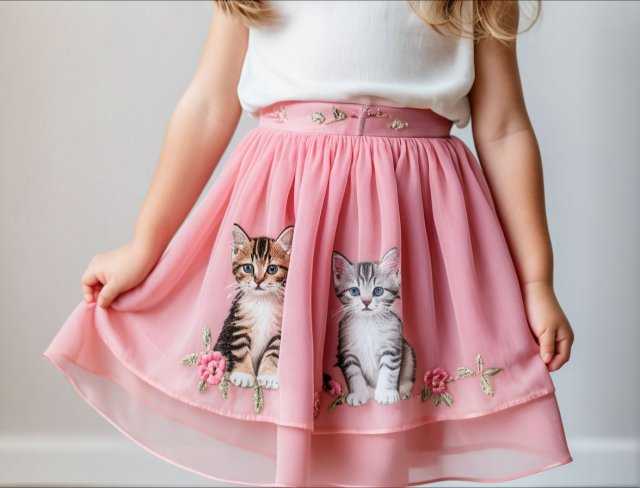
Despite its many benefits, sheer embroidery requires extra care to avoid common issues such as puckering or shifting. The delicate nature of sheer fabrics demands careful handling and preparation to maintain the fabric’s integrity and the quality of the embroidery. Choosing the right design and employing proper post embroidery care, such as gentle washing and careful drying, are also essential to preserve the appearance and longevity of the project.
Embroidery on sheer fabric enchants with its delicate beauty and the sophisticated effects it can produce. By understanding and mastering the technical aspects and creative possibilities of sheer fabrics, you can create embroidery projects that are both elegant and impactful. Embrace the unique qualities of sheer embroidery and explore the endless opportunities it offers to enhance your designs with a touch of ethereal charm.
Types of Sheer Fabrics
Sheer fabrics offer a delicate and ethereal quality that can enhance various embroidery projects. Understanding the characteristics and applications of different sheer fabrics helps in selecting the right material for your designs. This section provides an in depth look at popular sheer fabrics used in embroidery, including their unique attributes and best use cases.
• Organza
Organza is a crisp, lightweight fabric made from silk or synthetic fibers. It is characterized by its stiff texture and transparent quality, making it a popular choice for creating elegant embroidery projects. Organza holds its shape well, which allows for intricate designs with detailed stitching. Its firmness provides excellent support for embroidery, making it ideal for applications such as decorative overlays on garments, bridal veils, and party decorations. The fabric’s transparency can showcase embroidered designs in a refined and sophisticated manner.
• Chiffon
Chiffon is a soft, flowing sheer fabric typically made from silk or polyester. It has a slightly crinkled texture that adds a subtle, romantic touch to embroidery projects. Chiffon’s lightness and drape make it suitable for garments like blouses, dresses, and scarves. However, due to its delicate nature, chiffon requires careful handling during embroidery to prevent puckering or distortion. Using appropriate stabilizers and machine settings is essential to maintain the fabric’s fluidity and achieve a polished finish.
• Tulle
Tulle is a fine, net like fabric commonly made from nylon or polyester. It is known for its lightweight and airy qualities, which make it ideal for layering and creating volume in embroidery designs. Tulle is frequently used in bridal wear, tutus, and decorative accents. Its open weave can create unique effects when combined with embroidery, such as adding texture and dimension. Because of its tendency to shift, tulle benefits from additional stabilizers and careful hooping to ensure the design remains crisp and well defined.

• Voile
Voile is a soft, semi transparent fabric often made from cotton or polyester. It has a smooth texture and a slight sheen, making it a versatile choice for both casual and formal embroidery projects. Voile is used in a variety of applications, including summer garments, curtains, and home decor items. Its softness and slight drape make it easier to handle than some other sheer fabrics, but it still requires proper stabilization to prevent movement during embroidery.
• Georgette
Georgette is a light, semi sheer fabric known for its slightly crinkled surface and fluid drape. Made from silk or polyester, it combines the qualities of both chiffon and crepe. Georgette is often used in evening wear and dresses due to its elegant appearance and gentle flow. Its texture provides a good surface for embroidery, but it requires careful handling to avoid distortion. The fabric’s semi sheer nature adds a layer of sophistication to embroidered designs, making it suitable for both simple and elaborate patterns.
• Batiste
Batiste is a fine, lightweight fabric usually made from cotton or a cotton blend. It has a soft, smooth texture and a slight sheen, making it a favored choice for delicate embroidery work. Batiste is often used for baby garments, lingerie, and soft home textiles. The fabric’s gentle surface allows for detailed embroidery without overpowering the design. It also offers good stability when properly hooped and stabilized, making it easier to achieve precise results.
• Lace
Lace is a decorative, open weave fabric made from threads of cotton, silk, or synthetic fibers. Its intricate patterns and delicate nature make it a popular choice for adding a touch of elegance to embroidery projects. Lace can be used as an overlay on garments or as a standalone piece for accessories like table runners and decorative elements. When embroidering on lace, it’s important to choose a fine needle and thread to maintain the fabric’s intricate detailing and avoid causing damage to the lacework.
Selecting the right sheer fabric for your embroidery project can greatly influence the final outcome. Each type of sheer fabric offers distinct characteristics that can enhance your designs in unique ways. By understanding the attributes and applications of fabrics like organza, chiffon, tulle, voile, georgette, batiste, and lace, you can make informed choices that will lead to beautiful and professional results in your embroidery projects.
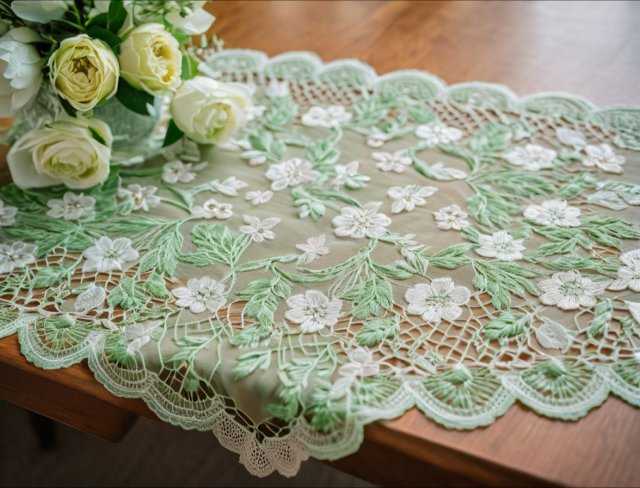
Preparing for Sheer Fabric Embroidery
Preparing sheer fabrics for embroidery is a critical step that ensures the best results in your project. Proper preparation involves selecting the right fabric, ironing it carefully, and using suitable stabilizers and hooping techniques. This section outlines these foundational steps to set the stage for successful embroidery.
♦ Choosing the Right Fabric
Selecting the appropriate sheer fabric is the first crucial step in preparation. Sheer fabrics such as organza, chiffon, and tulle each have unique characteristics that affect their embroidery. Test samples of the fabric to understand how it interacts with the design and machine settings. Ensure the fabric aligns with your design goals and the overall project requirements. Testing helps in identifying any issues early and allows for adjustments before working on the final piece.
♦ Ironing the Fabric
It is essential to pre iron sheer fabric to achieve a smooth and flat surface before embroidery. Set your iron to a low heat setting to avoid damaging the delicate material. Use a pressing cloth to protect the fabric from direct contact with the iron. Gently press out any wrinkles or creases, which can otherwise disrupt the embroidery process. Proper ironing ensures that the fabric is in optimal condition, facilitating a cleaner and more precise embroidery outcome.
♦ Hooping Techniques
Correctly hooping sheer fabric is not only vital, but critical to prevent distortion and maintain stability during embroidery. Choose a hoop that fits the fabric size and ensure it holds the fabric securely without stretching it. Smooth out wrinkles and folds before hooping to avoid any interference with the embroidery design. Using hooping aids or fabric guides can help keep the fabric in place and ensure it remains stable throughout the stitching process.
♦ Design Placement
Proper design placement on sheer fabric is key to achieving a visually appealing result. Position the design in areas that enhance its visibility and impact, such as central panels or along the edges. Ensure that the design does not interfere with seams or fabric edges that could affect its appearance. Careful placement during the preparation phase ensures that the embroidery enhances the fabric’s aesthetic and functionality.
♦ Test Runs
Performing test runs on a scrap piece of sheer fabric is an important preparatory step. Test runs allow you to evaluate how the fabric and stabilizer interact with the machine settings and design. Make necessary adjustments based on these tests to optimize the embroidery process. Conducting test runs helps identify potential issues early and ensures that the final embroidery meets your expectations.
With the fabric properly prepared, the next step involves applying effective techniques and tips for embroidering sheer fabrics. These strategies will help you handle the delicate nature of sheer materials and achieve beautiful, high quality results.
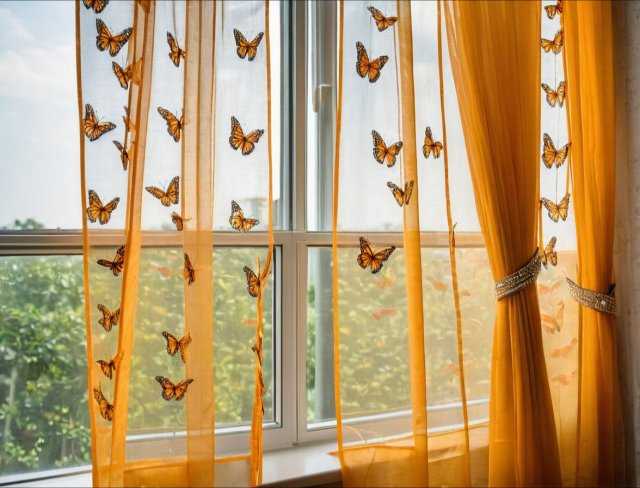
Tips and Techniques for Embroidering
Embroidering sheer fabrics requires specific techniques and considerations to ensure the best possible outcome. From choosing the right needle and thread to handling the fabric with care, this section provides key tips and techniques to enhance your embroidery projects with sheer materials.
1. Choosing the Right Needle and Thread
Selecting the appropriate needle and thread is crucial when working with sheer fabrics. Use a fine, sharp needle, such as a size 65/9 or 70/10, designed for delicate materials. Opt for lightweight threads, such as 60 weight or finer options, in materials like silk, fine rayon, or polyester. These choices complement the transparency of sheer fabrics and ensure smooth stitching without overpowering the fabric.
2. Selecting Suitable Designs
When embroidering on sheer fabrics, opt for lighter, less dense designs that will not overwhelm the delicate material. Intricate or heavy designs may distort the fabric or lead to poor results. Choose designs that enhance the fabric’s natural transparency and complement its lightweight nature, achieving a balanced and aesthetically pleasing effect.
3. Adjusting Machine Settings
Properly adjusting your embroidery machine settings is essential for working with sheer fabrics. Reduce the stitch density to avoid puckering or distortion. Lower the thread tension to ensure smooth stitching and prevent thread breakage. Adjust the stitch length and width as needed to accommodate the delicate nature of the fabric and achieve clean, precise results.
4. Embroidery Placement and Layering Techniques
Effective placement and layering are crucial when working with sheer fabrics. For multi layered designs, use stabilizers to keep each layer in place and avoid shifting. Ensure proper alignment of the fabric layers to maintain consistency in the embroidery design. Techniques such as using temporary adhesive sprays or additional stabilizers can help manage multiple layers and ensure a smooth embroidery process.
5. Using Proper Stabilization
Proper stabilization is key to supporting sheer fabrics during embroidery. Lightweight, water soluble stabilizers are ideal as they provide support without affecting the fabric’s transparency. For additional stability, consider using a combination of stabilizers or a tear away stabilizer that can be removed carefully after embroidery. Effective stabilization prevents shifting and puckering, ensuring that the embroidery design remains crisp and well defined.
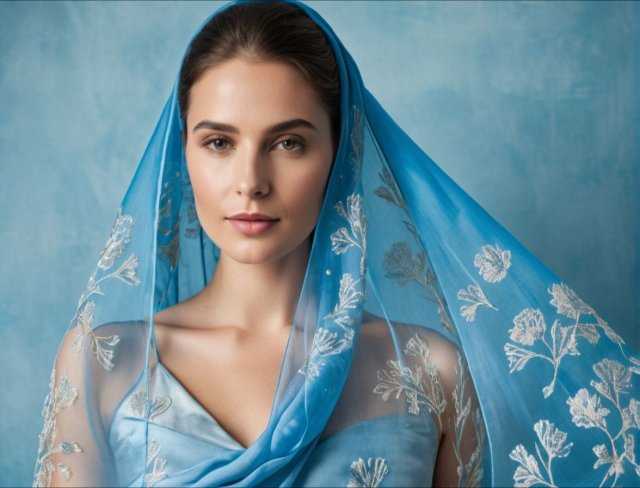
6. Handling Fabric with Care
Handling sheer fabrics with care is crucial to avoid damage during the embroidery process. Gently manage the fabric to prevent stretching, pulling, or snagging. Use gloves or clean hands to handle the fabric and avoid any contact with oils or dirt that could affect the fabric’s appearance. Proper handling helps maintain the fabric’s quality and ensures a successful embroidery outcome.
7. Incorporating Techniques for Transparency
Enhancing the transparency of sheer fabrics during embroidery can add a unique visual effect. Techniques such as using a contrasting thread color or incorporating design elements that complement the fabric’s transparency can create striking results. Explore different embroidery techniques and thread choices to highlight the fabric’s delicate nature and achieve a beautiful, cohesive design.
8. Post Embroidery Care
After completing your embroidery project, proper care is essential to maintain the fabric and design quality. Gently rinse away any remaining stabilizer using cold water and avoid wringing or twisting the fabric. Lay the fabric flat to dry or use a low heat setting if ironing is needed. Proper post embroidery care ensures that the final product remains in excellent condition and preserves the integrity of both the fabric and the design.
Successfully embroidering sheer fabrics involves careful preparation and the application of specific techniques. By following these tips and incorporating the recommended practices, you can achieve stunning results with delicate materials. Embrace the unique qualities of sheer fabrics and explore their potential in your embroidery projects.
Troubleshooting Common Issues During Embroidery
Despite careful preparation and technique, you might encounter some challenges when embroidering on sheer fabrics. Understanding these potential issues and knowing how to address them will help ensure a smoother embroidery process and better results. Here are common problems and effective solutions:
• Puckering and Wrinkling
Puckering and wrinkling are common issues when working with sheer fabrics due to their delicate nature. This usually happens if the fabric is pulled or stretched during embroidery. To prevent this, ensure that the fabric is properly stabilized and avoid excessive tension. Using a lightweight, water soluble stabilizer helps support the fabric without leaving residue. If puckering occurs, try adjusting the thread tension to be less tight and reduce the stitch density in your design. Additionally, avoid over hooping the fabric, and use a smaller hoop to minimize the risk of stretching.

• Visible Stabilizer Marks
Sheer fabrics can show stabilizer marks if the stabilizer is not chosen or removed properly. To avoid this, use a water soluble stabilizer that dissolves completely without leaving any traces. After completing the embroidery, gently rinse the fabric in lukewarm water to remove any residual stabilizer. If you’re using tear away stabilizers, be very careful during removal to avoid pulling the fabric or leaving behind any residue. Lightly pressing the fabric with a pressing cloth can also help remove any remaining stabilizer marks.
• Needle Holes and Snags
Needle holes or snags can occur if the wrong type of needle is used or if the fabric is handled roughly. Ensure you are using a fine, sharp needle suited for delicate fabrics, such as a size 65/9 or 70/10. Handle the fabric gently and avoid any rough or sharp edges on the hoop or machine that could catch the fabric. If snags occur, stop immediately and check for any issues with the needle or thread. Replace the needle if necessary and carefully inspect the fabric for any damage.
• Uneven Stitches
Uneven stitching on sheer fabrics can result from improper tension settings or fabric movement during embroidery. To address this, check and adjust the thread tension to ensure it is appropriate for the fabric and thread type. Make sure the fabric is securely hooped and that no excess movement is occurring during stitching. If stitches appear uneven, reduce the stitching speed and perform test runs on a scrap piece of fabric to fine tune settings before starting on the actual project.
• Thread Breaking
Thread breakage can be caused by several factors, including incorrect tension, using the wrong type of thread, or fabric movement. Ensure that you are using lightweight, appropriate threads for sheer fabrics and that the machine’s thread tension is properly adjusted. Check for any issues with the thread path or bobbin that might cause snagging or breakage. Regularly clean and maintain your machine to prevent any mechanical issues that could contribute to thread problems.
By addressing these common issues with the right techniques and adjustments, you can achieve smoother embroidery results and make the most of working with sheer fabrics. Troubleshooting effectively ensures that your final project meets your expectations and showcases the delicate beauty of the sheer materials.

Conclusion
Sheer fabric embroidery offers a captivating blend of delicacy and artistry, making it a rewarding yet challenging endeavor. With the right preparation, techniques, and thoughtful consideration, you can transform sheer fabrics into exquisite canvases that showcase the interplay of light, texture, and design. From choosing the appropriate stabilizer and threads to mastering the careful handling of the material, each step in the process contributes to achieving flawless results. The transparency of sheer fabrics lends a unique character to embroidery projects, allowing designs to take on an airy, almost magical quality that’s difficult to replicate on other materials.
The possibilities in sheer fabric embroidery are vast and exciting. Whether you’re working on fashion items like scarves and blouses or decorative accents such as curtains and overlays, the potential to create visually stunning pieces is immense. By embracing the challenges and honing your skills, you can unlock new creative avenues and elevate your embroidery work to a level of sophistication and elegance. Mastering sheer fabric embroidery isn’t just about technical precision; it’s about embracing the delicate beauty and versatility that sheer fabrics bring to the art of embroidery.
Now that you have read through this article, feel free to SHOP for products we have created. If you are looking for something special which isn’t in our store, feel free to contact us.
